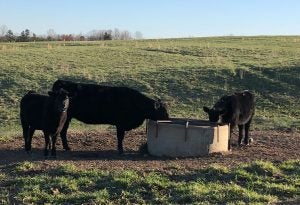Soaring heat and humidity hit northwest Kansas this week, killing thousands of cattle across the state. Final death numbers are still being reported, but some news sources put it at around 10,000 animals — and these deaths come as a particular hit to the industry after producers already reduced herds due to drought and feed costs.
“It was an unusual weather event last weekend in Southwest Kansas. We saw a 10 to 14 degree jump in temperatures along with an increase in humidity almost overnight. There was little wind, and heat stress became an issue because it was such a sudden change. Cattle didn’t have time to acclimate,” said Kansas Livestock Association Vice President of Communications Scarlet Hagins.
?? On a ranch in the southwest of the state of Kansas alone, more than 3,000 cattle suddenly fell dead last weekend. According to the farmers, there is no plausible explanation for this mass extinction. Cases like this are currently accumulating in the USA. pic.twitter.com/tj6vZ9uNGq
— Agent J (@YouMayCallMeJay) June 15, 2022
Kansas is the third-largest producer of cattle, following Texas and Nebraska. The state has over 2.4 million cattle on feed.
This week, temperatures reached up to 108 degrees Fahrenheit with little cooling factor from wind. Continued high temperatures are a serious threat to continued losses throughout the coming days.
Cattle losses have already hit the United States in recent years as producers reduced herd numbers due to continued drought. The liquidation of nearly 3 million head of cattle have resulted in a tighter beef supply, while beef demands have remained steady throughout 2022.
Heat stress in June is not uncommon. The days get longer, things heat up, humidity rises and producers experience the perfect storm for herd loss. Without the ability to cool off during these shorter, hotter evenings, the heat load can become too much for livestock.
Fat cattle, those who still are carrying some of their winter hair, and cattle who have suffered respiratory illness are the most susceptible to heat stress.
Scarlett said, “Heat stress is always a concern this time of year, and is something cattle feeders work to mitigate. They have protocols in place like adding extra water troughs as well as altering feeding schedules and rations. They work really hard to make sure things like this do not happen. They strive for cattle to be comfortable and well taken care of. This was a very unusual event that happened in a short amount of time.”
All loss is not preventable, but producers are encouraged to heighten precautions to reduce heat stress
Check waters at least daily and increase availability and space at water sources.
Limit movement of cattle during the day including processing, working, and transportation.
Utilize water sources to cool pens during evenings.
Provide shade and increase availability for air circulation.
Analyze feed programs to decrease digestive heat and feed the majority of rations later in the afternoon.
Monitor weather and heat index.

Know the signs of heat stress
Cattle will show initial signs of heat stress with heavy breathing and increased time on foot.
As heat stress progresses, animals may begin drooling or foaming at the mouth while maintaining heavy breathing.
Elevated breathing continues and results in open-mouthed breathing with signs of straining at the animal’s flanks.
Animal’s tongues protrude and respiration increases, heads may lower and animals may isolate themselves.


